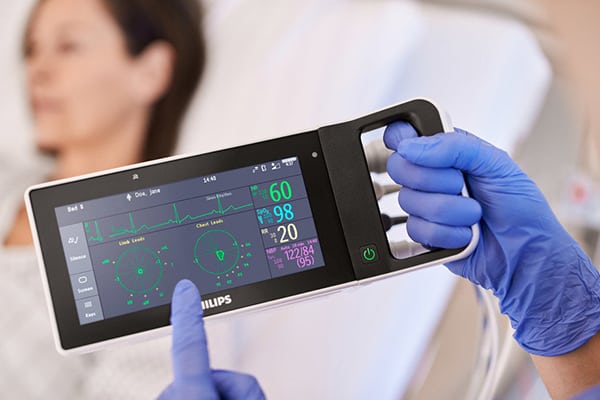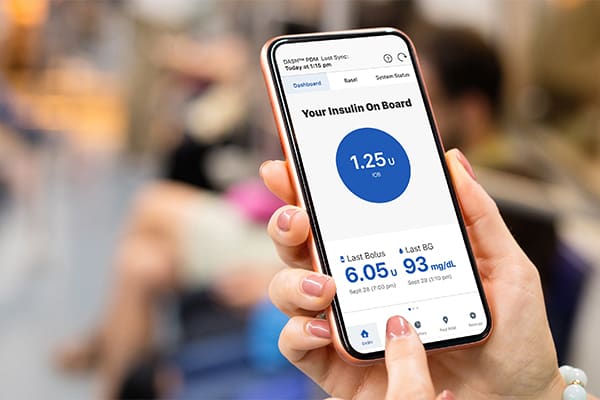EMERGING HEALTHCARE INDUSTRY TRENDS #8: Improving Medical Product Design for UX
By making improving medical product design for UX a priority and enhancing overall product usability, health tech can improve patient outcomes and reduce the cognitive load that bad UI can have on healthcare workers. The team at THRIVE understands the impact this trend has on the healthcare industry with this blog, a continuation of our series on the most significant emerging healthcare trends of 2022.
Medical Product Design: What is Medical Device User Experience (UX) Design?
Medical device UX design is the design and development of all aspects of the end-users interaction with a medical device and its related services. However, the user experience (UX) is broader than just the User Interface (UI). It can include an entire UX ecosystem concerned with the device’s hardware and software and its applications, e-commerce, advertising, search, location-based services, and unified communications, amongst other things. As healthcare becomes increasingly consumerized, medical product design isn’t just becoming more aesthetically appealing and designed to adapt to individual users’ needs and integrate seamlessly into the care environment. These shifts in what we expect from health tech ensure that care ecosystems serve patients and clinicians at a high level, reduce product recalls, and improve the overall quality of care.
The key drivers of this trend are:
– Consumerization of healthcare: Healthcare and consumer products have become closer together idealistically and design-wise. As a result, patients now expect both devices and interfaces to be intuitive and easy to use, like their home appliances and smartphones.
– FDA Digital Center of Excellence launch: Housed within the Center for Devices and Radiological Health (CDRH), this center will serve as the federal resource for digital health technologies, like mobile apps, wearable devices, and/or ecosystems.
– COVID-19 accelerated adoption: By putting stress on the entire healthcare system, the COVID-19 health crisis helped expose the industry’s weakest parts as healthcare providers scrambled to keep up with increased demand. In addition, inaccessible and unusable products were incredibly costly during this time, further emphasizing the need for assessable tech.
Why Medical Product Design for UX Matters
A bad UX in healthcare isn’t just frustrating for users — it’s also costly and can lead to declining patient outcomes. Here’s why: when clinicians have trouble using a physical device or digital interface, it slows down their work, causing inefficiencies and hindering, rather than aiding the quality of patient care. The FDA has found that many adverse events related to programming errors were “attributed to poor device usability.” A secondary effect: with these usability issues also come product recalls, often citing design issues as the main reason for failure.
For more information about medical product design for UX, contact THRIVE online.
The Opportunity: Increasing Efficiencies by Streamlining Each Episode of Care
Bad medical product design for UX isn’t the only culprit driving inefficiency with so many different products and devices in use across the continuum of care. When clinicians and patients are forced to interact with several devices and interfaces to complete just one task, they are slowed down and frustrated by the experience. Eliminating steps and reducing the number of UI’s used can help clinicians focus on care and give patients a positive experience.
For example, the apps Peri and InPixon automatically check hospital patients in when they arrive on-premises using geofencing. They then help them navigate to their destination — a significant benefit in notoriously tricky-to-navigate hospitals — and let HCPs know that they have arrived and completed their pre-surgical checklist. Platforms like these can help after the fact by synchronizing calendars and scheduling follow-up appointments. And when the patient leaves, the app can even remind them where they parked or guide them to the pharmacy.
Applications like Seamless and J&J’s Health Partner also help guide patients before, during, and after hospitalization through personalized education with interactive care and dynamic reminders. Health Partner works explicitly to address emotional challenges in the treatment process, helping to build patient trust and confidence.
The Opportunity: Reducing Cognitive Load by Designing Transferrable Mental Models Across Branded Systems
Institutions are increasingly adopting branded product ecosystems, where patients expect consistent experiences. To get there, medical product design for UX must have a central role. Product ecosystems that successfully employ signature interactions across touch points reduce cognitive load for users, yielding a positive user experience and differentiating the ecosystem from competitors. There is also anecdotal evidence that institutions with intuitive systems are more likely to retain HCPs and reduce burnout.
There are great examples from medical product design companies we’d like to point out.

The Philips IntelliVue X3 is a family of patient monitoring products with a solid visual brand language across its products, with a unified UX for the entire suite of offerings. Across devices, users are met with consistent colors and visualization, reducing mental processing, which can increase understanding. The system’s smartphone-inspired interactions also feel familiar, making the devices easier to use on the first try and reducing cognitive load.
Similarly, the Stryker iSuite offers all the equipment for a fully integrated OR suite under one umbrella, enabling HCPs to provide a customized and cohesive product ecosystem. In addition, the diverse product portfolio and emphasis on integrating physical and digital experiences allow a seamless OR in which usability is streamlined and efficiency is increased.
Download the Art of Storytelling yellow paper for additional information and insights.
Keep a Pulse on the Healthcare Industry with THRIVE
Keeping up to date with trends like improving medical product design is vital for running a successful health tech business. The landscape is changing quickly and our series of trend blogs will explore each of these new technologies within the medical practice and how they shape the healthcare ecosystem. And don’t miss the previous articles in this series for the trends that we’ve covered so far.
THRIVE is an expert healthcare technology consultant with years of proven experience in the industry. We’d love to talk more about how we can help you respond to the shifting trends so that you can protect your business now and into the future.
RELATED POSTS
If you missed any of the previous posts in this blog series on the future trajectory of healthcare, you can find them here:
Week 1: The Shifting Point of Care
Week 2: The Hyper Personalization of Care
Week 3: Expanding the Continuum of Care
Week 4: Patient Empowerment
Week 5: Physician Empowerment
Week 6: Orchestrating Operating Room Efficiency
Week 7: Human-centered Healthcare Design
Week 9: Improving Contextual Design & Cognitive Empathy
Week 10: Enhanced Data Visualization Tools
Week 11: The Increasing Prevalence of Robot-Assisted Surgery
Week 12: Behavioral Design for Medical
Week 13: Humanized Patient-Provider Interactions







